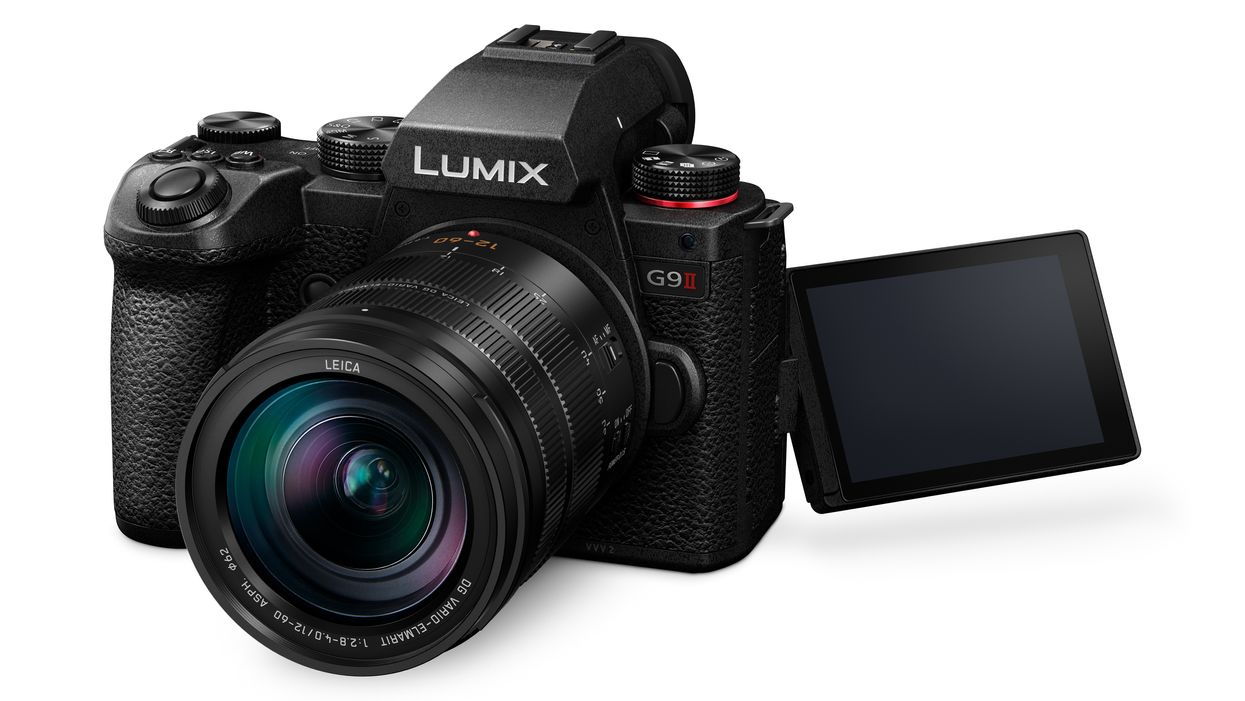The LUMIX G9II Is Panasonic’s Best Micro Four Thirds Camera Yet
Panasonic builds on its micro four thirds legacy with the LUMIX G9II.

Introducing the Panasonic LUMIX G9II
Equipped with a new sensor and updated Phase Detection Auto-Focus (PDAF) technology, Panasonic has unveiled their new LUMIX G9II—the brand’s first to micro four thirds camera to feature such tech and perhaps their best edition yet.
While not a top end option for indie filmmakers and video professionals, the Panasonic LUMIX G9 has filled a spot as a solid travel camera or inexpensive B or C cam for bigger productions with its solid (and reliable) 4K/60p video and sub-$1,000 price tag.
However, the original LUMIX G9 did leave a bit to be desired. Let’s see just how much this updated LUMIX G9II steps things up.
Introducing the Panasonic LUMIX G9II
So, let’s start with the biggest specs and features first and foremost. The elephant in the room with the G9II is its micro four-thirds design, which will always limit its popularity with some full-frame fantastic filmmakers. However, with a 25.2-megapixel Live MOS sensor and a new engine capable of producing higher-resolution images than before with richer tones, the micro four-thirds-ness might be forgivable—especially when you consider the price.
That being said, a lot of the key selling points for the LUMIX G9II appear to have to do more with photography than video. Burst shooting modes hybrid PDAF technology can only do so much to move the needle for videographers looking for hybrid photo/video capture.
Still, as with other LUMIX cameras, Panasonic knows its content creator audience quite well and has found plenty of small and large ways to make the G9II stand out at least against its predecessor with added video features and specs.
The LUMIX G9II for Video
One of the biggest improvements from the G9 to the G9II is going to have to do with image stabilization as the G9II boasts improved IBIS with 7.5-stop 5-axis Dual I.S. and advanced Active I.S. for vastly better video image stabilization. Panasonic has really doubled down on the LUMIX G9II serving as a handheld video camera with greater support for handheld shooting of dynamic scenes overall.
Similar to the original G9, the G9II will again be limited to 4K video up to 60p (although DCI and UHD should serve most online content creators just fine). The G9II can also record with 4:2:2 10-bit color and provide slow-motion video support for 4K/120p with 4:2:0 10-bit as well.
There’s also some cool new frame indicator functions to help surround the frame with a red border as you record plus a simplification of the conversion process from anamorphic videos to vertical videos for all you content creators looking to dive into TikTok and Reels.

A look at the LUMIX G9II for video
Credit: Panasonic
Price and Availability
As mentioned above, this is not a high-end cinema camera by any means. And even in Panasonic’s vault, there are plenty of better options that are more video-centric.
Still, with a price point of $1,897.99 at launch it’s not a bad option for those looking for specific photo/video work.
Here are the full specs and a purchase link with the LUMIX G9II expected to arrive sometime in early November.
- 25.2MP Live MOS Micro Four Thirds Sensor
- C4K/4K 60p 4:2:2 10-Bit Video Recording
- 100MP Handheld High-Res Mode
- 5-Axis Sensor Stabilization; Dual I.S. 2
- 3.68m-Dot 0.8x-Magnification OLED LVF
- 3.0" 1.84m-Dot Free-Angle Touchscreen
- 779-Point Phase-Detection AF System
- ISO 25600 and 75 fps Continuous Shooting
- Dual UHS-II SD Slots; Wi-Fi & Bluetooth
- Weather-Sealed Design











